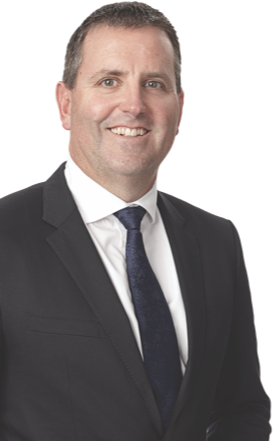CFO’S REVIEW
Our goal is to create a strong, diversified and flexible capital platform able to respond as our business priorities change.
 NICK HAWKINS
NICK HAWKINS
CHIEF FINANCIAL OFFICER

MANAGING OUR CAPITAL FOR STRENGTH AND FLEXIBILITY
This year, we continued to manage our strong capital position to deliver on our promise to our people, customers, shareholders and other stakeholders.
Our goal is to create a strong, diversified and flexible capital platform able to respond as our business priorities change. Two decisions inform our approach:
- how much capital we need, and
- the best form of capital to fund that need.
We have had a consistent view on the amount of capital we need for some time now: we want our capital level to be around 50% above our minimum regulatory requirements. We have, however, made changes to the form and mix of our capital, creating more flexibility and optionality.
When we demutualised in 2000, our capital platform was equity from our mutual owners and catastrophe reinsurance. Today, we have a more sophisticated approach to funding the company. We think of this in terms of three big buckets:
- equity,
- debt and hybrids, and
- reinsurance, which also has some different components.
Our equity funds come from a diverse group of Australian and international institutions, as well as retail investors – many from our original mutual days.
RETURNING SURPLUS CAPITAL TO INVESTORS
We returned surplus capital to our investors via our dividend policy, and an off-market buy-back announced in August 2016 and completed in October 2016, which bought back $314 million worth of stock at an 11% discount.
RESHAPED DEBT INSTRUMENTS MAKE MORE EFFICIENT CONTRIBUTION TO REGULATORY CAPITAL
At 30 June 2017, we had around $1.6 billion of debt and hybrids on our balance sheet, sourced from Australian and New Zealand investors. We have reshaped our debt instruments over the last 12 months so they make a more efficient contribution to our regulatory capital. Our AA-minus rating for our key wholly owned operating entities is aligned to a gearing mix of around 30-40%. Our current debt and hybrids level puts us at the bottom end of that target range.
OUR THINKING ON REINSURANCE HAS DEVELOPED
There has also been a lot of activity in the area of reinsurance as we have developed our thinking. Reinsurance provides us with:
- catastrophe cover,
- operating capital, and
- volatility covers.
Catastrophe cover is about protecting us from the aggregation of risks. Australia and New Zealand are unusual markets: they are wealthy countries; people generally live in large cities close to each other on the coast; we have large market shares; and many of our cities are in relatively high peril exposed areas. That means that one event can affect many of our customers at the same time. We buy $8 billion of cover to protect against the infrequent but expensive events – making us one of the largest reinsurance buyers in the world.
Operating capital in reinsurance is when we enter into quota share arrangements. We have one of these with Munich Re, covering 30% of our compulsory third party insurance portfolio, to reduce the disproportionate amount of capital this portfolio requires us to hold versus the premium pool. The second, a 10-year, whole of account agreement with Berkshire Hathaway, was completed two years ago and removes considerable volatility from our earnings by exchanging 20% of our insurance risk for a fee-based income stream.
Importantly, in both cases these capital transactions have not affected the operations of the business, which we continue to run outright.
As part of our broader capital management program, we are currently exploring additional reinsurance quota share opportunities with our counterparties which have the potential to further strengthen our regulatory capital position.
We also have had volatility covers for a number of years, and are using them to help us manage earnings volatility. They take two forms: aggregate cover to protect us from the cumulative cost of a greater number of smaller natural peril events than we originally anticipated; and protection for claims that exceed our perils allowance.
We continue to be in a strong capital position and see further opportunities to optimise our capital platform.
